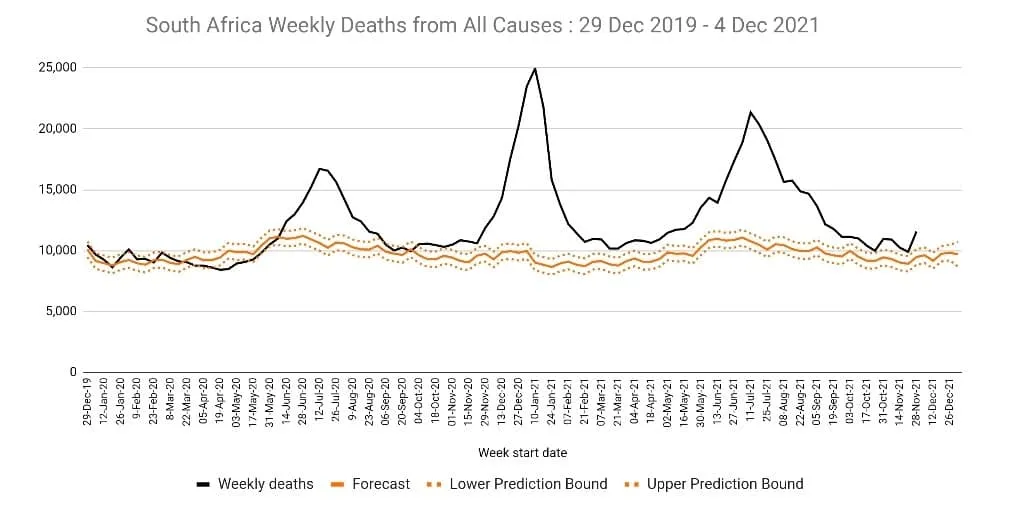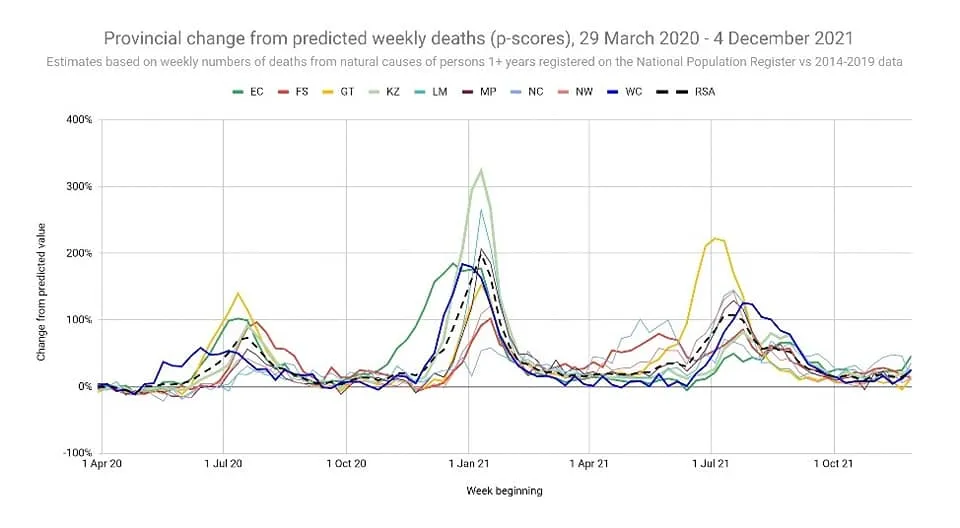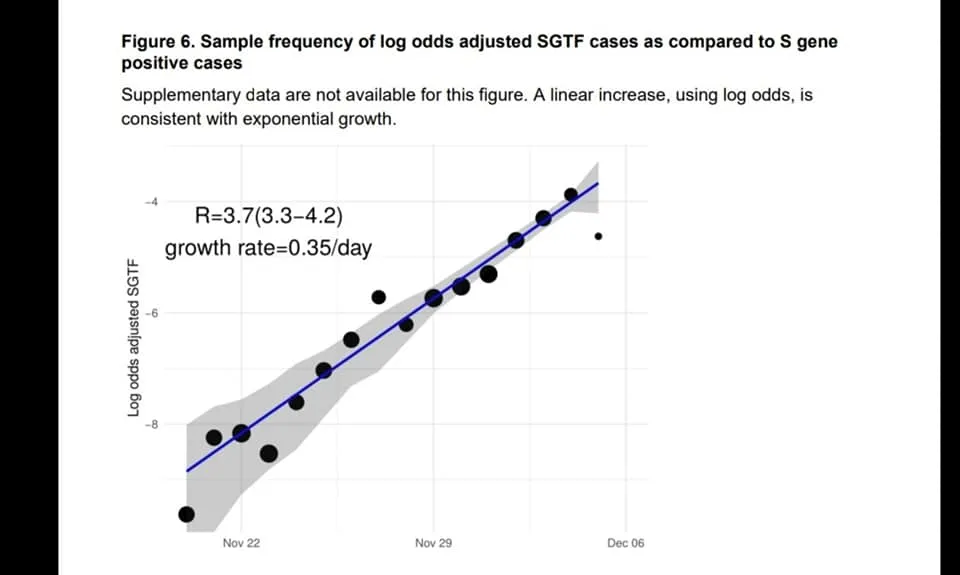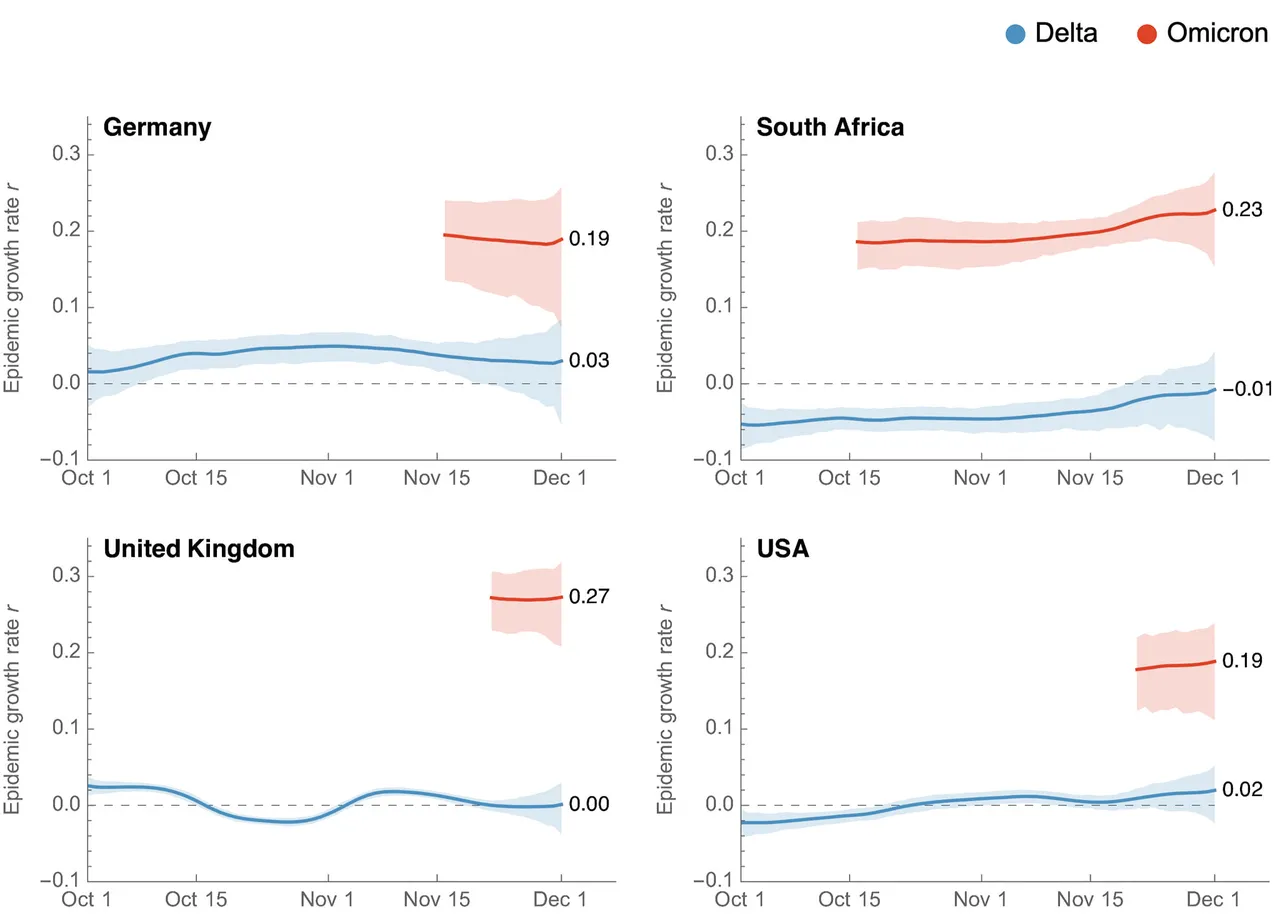
South Africa doesn't test for the coronavirus that much and deaths at home often don't get an accurate recording of cause of death, so their confirmed coronavirus death toll greatly underestimates the actual coronavirus death toll this pandemic.
However, we can use excess deaths to get a rough approximation of the true death toll. South Africa's death reporting like most countries is lagging, but they model the under-detection to get an ongoing model for weekly deaths. You can then compare the weekly death estimate to the normal forecast to get excess deaths.
We've not had a confirmed Omicron death yet, but Omicron is believed to have only started spreading 2-3 months ago, so it is still early days in terms of the progression of disease for the majority of cases.

If the England growth rate estimates are to be believed, we'll probably be looking at Omicron being dominant in the US by the end of the year or at least January. It all depends on how much Omicron is in the US right now. Unfortunately an Omicron-specific booster likely won't be available till March at the earliest.
Now is the time to get boosted. You'll get some protection in ~1 week, but full booster protection takes ~2-4 weeks.
I was hoping there would be a bigger lead time for this variant, but it spreads quite rapidly even in populations with high immunity.
We'll get a better idea of both its prevalence and its growth rate this upcoming week.
We are already still in the midst of a Delta wave. Flu season is starting to ramp up as well, albeit still at fairly low levels. So we may be seeing a lot of activity in January.
The early picture seems to indicate Omicron may be milder than Delta, but it is still too early for any certainty in that regard. It may just be a byproduct of high population immunity. Population immunity varies a lot in the US unfortunately, so regional hotspots may vary in severity.

The first chart is from the UK HSA on Omicron growth in England using S-gene failure as a proxy.
The second is from the CDC genomic surveillance tracker. We are sequencing more these days, so the variant prevalence modeling is fairly robust.
Trevor Bedford estimates the growth rate for Omicron so far in the US is lower than it is for the UK. Though note the wide overlapping CIs between the two countries.
Ln(2)/growth rate=doubling time, so ln(2)/.19 would be doubling every 3.65 days.
If this is accurate we may have some more time before Omicron becomes dominant here. Perhaps mid-late January instead of late December/early January if we went by the UK growth rate.
Though these are all sensitive to how much Omicron there is already in the US and the actual growth rate. As of the week ending December 4th the CDC estimated Delta was 99.9+% of cases. If it is more prevalent than that or the actual doubling time is faster, then it will become dominant earlier.
